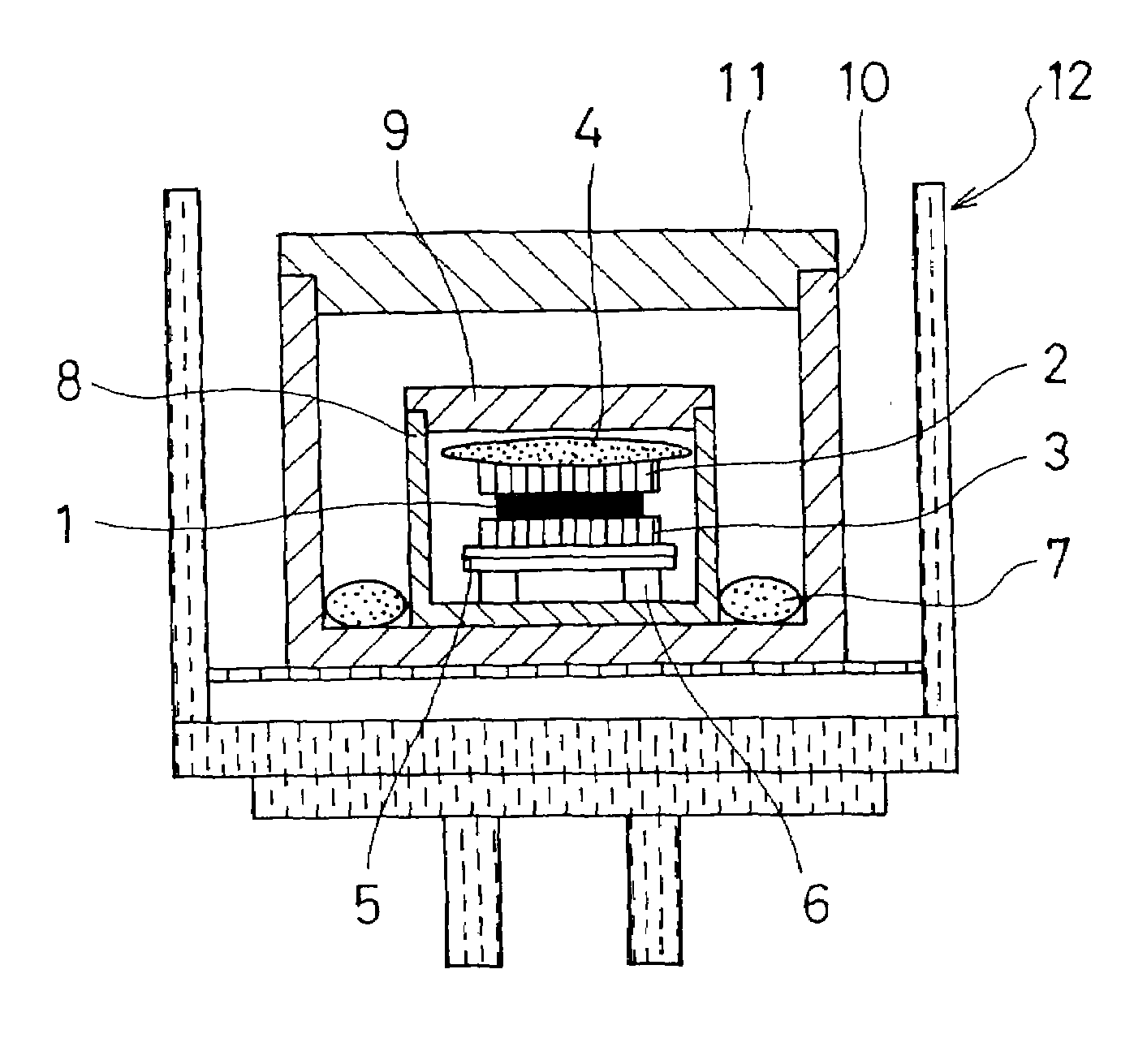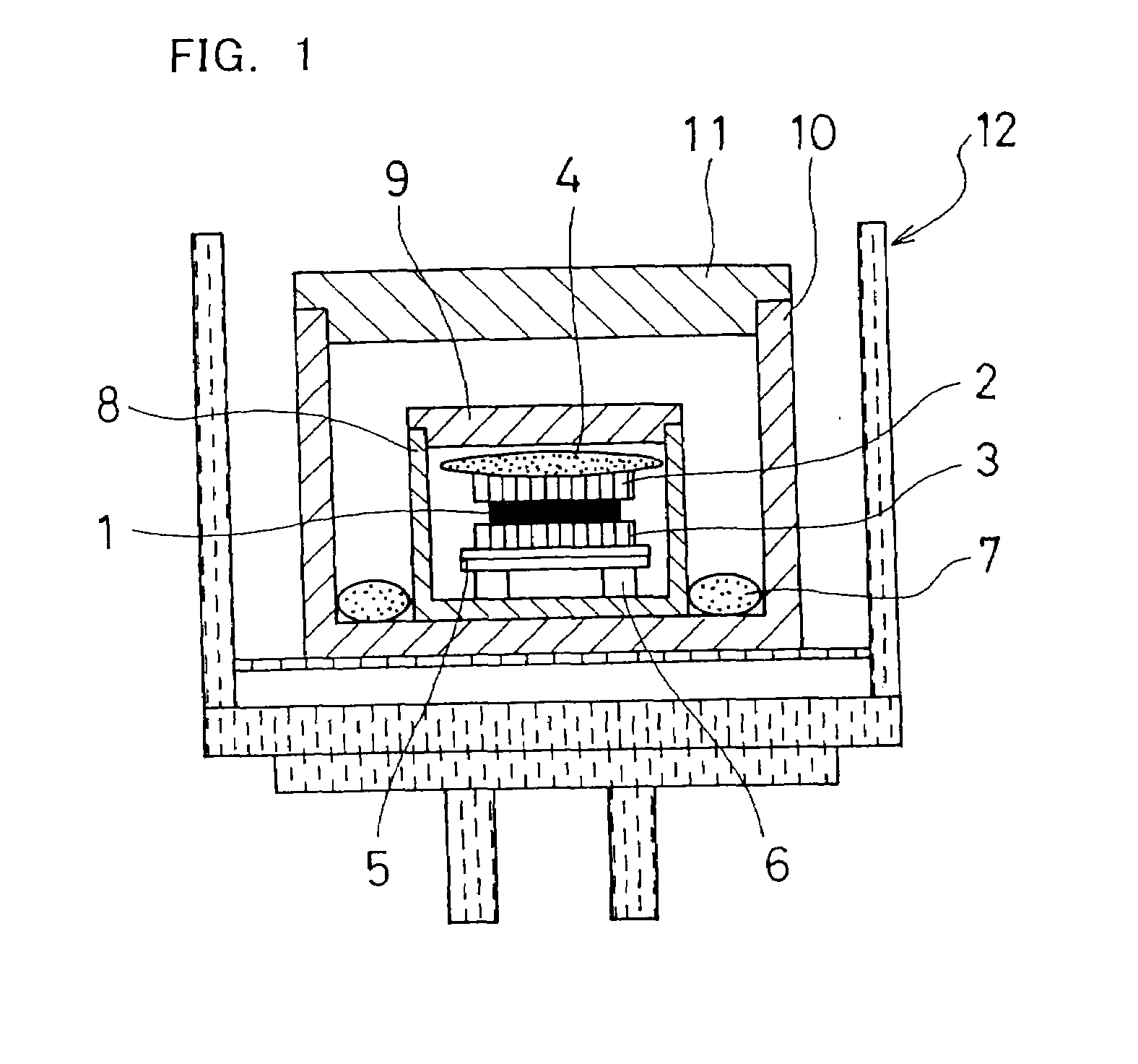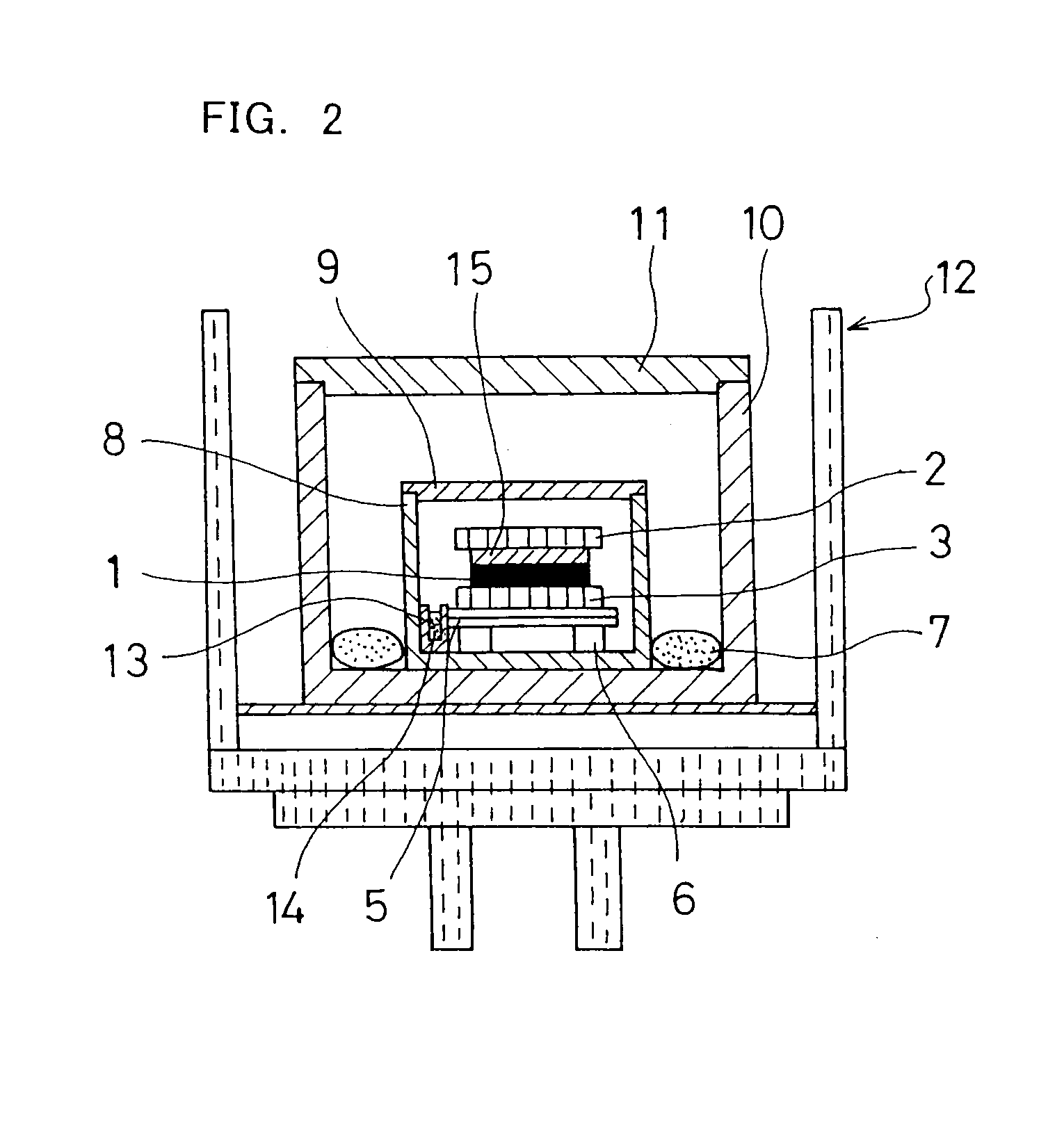Method for producing single crystal silicon carbide
a single crystal silicon carbide and silicon carbide technology, applied in the direction of single crystal growth, polycrystalline material growth, liquid-phase epitaxial-layer growth, etc., can solve the problem of easy generation of crystal defects, micropipe defects, crystal defects, etc., and difficult stoichiometrically accurate control of partial pressure, etc., to suppress the entry of impurities upon heat treatment
- Summary
- Abstract
- Description
- Claims
- Application Information
AI Technical Summary
Benefits of technology
Problems solved by technology
Method used
Image
Examples
Embodiment Construction
[0046]Hereinafter, single crystal SiC according to the present invention will be described with reference to FIGS. 1 and 2 using examples different in manner of interposing very thin metallic Si melt layer between single crystal and polycrystal SiC substrates.
[0047]FIG. 1 is a schematic sectional view of a heat treat furnace used for growing single crystal SiC according to the present invention. In FIG. 1, reference numeral 1 denotes a single crystal 6H-SiC substrate as a seed crystal. Reference numerals 2 and 3 denote polycrystal SiC substrates sandwiching the single crystal SiC substrate 1. Reference numeral 4 denotes metallic Si. Reference numeral 7 denotes a Si piece for controlling sublimation of SiC upon heat treatment. Reference numeral 10 denotes a crucible made of graphite. Reference numeral 11 denotes an upper cover. Reference numeral 12 denotes a soaking case.
[0048]As illustrated in FIG. 1, the single crystal SiC substrate 1, polycrystal SiC substrates 2 and 3, and metall...
PUM
 Login to View More
Login to View More Abstract
Description
Claims
Application Information
 Login to View More
Login to View More - R&D
- Intellectual Property
- Life Sciences
- Materials
- Tech Scout
- Unparalleled Data Quality
- Higher Quality Content
- 60% Fewer Hallucinations
Browse by: Latest US Patents, China's latest patents, Technical Efficacy Thesaurus, Application Domain, Technology Topic, Popular Technical Reports.
© 2025 PatSnap. All rights reserved.Legal|Privacy policy|Modern Slavery Act Transparency Statement|Sitemap|About US| Contact US: help@patsnap.com



